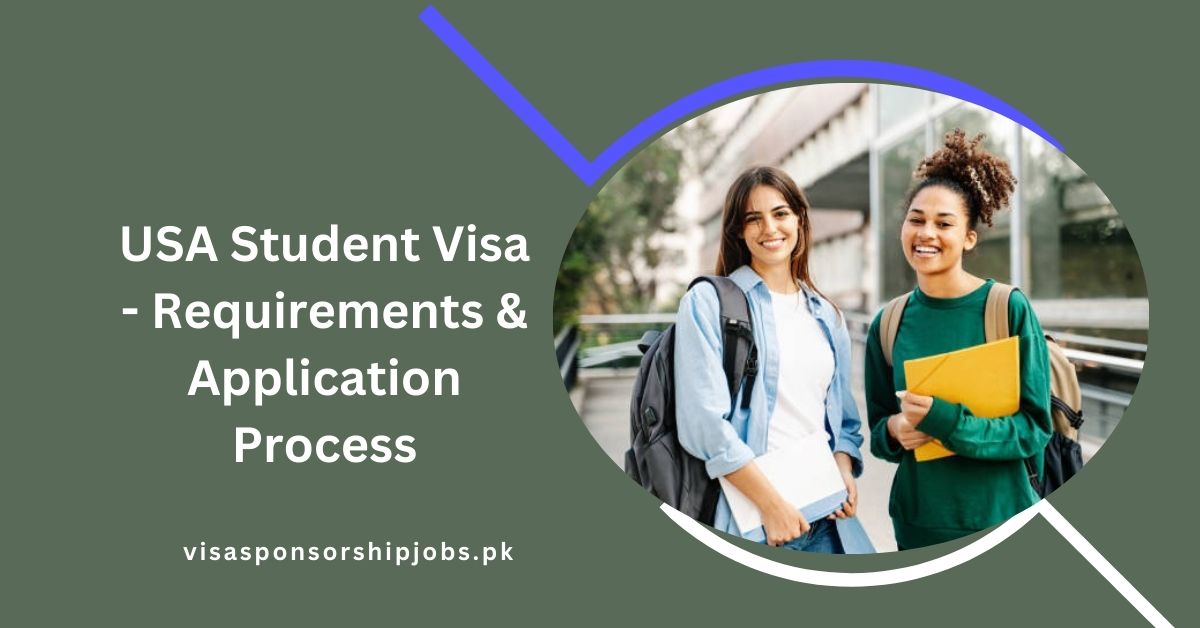USA Student Visa 2025 – Requirements & Application Process
The right information can make the process of obtaining a U.S. student visa much smoother. International students seeking higher education in the United States typically require an F-1 visa, which allows them to enroll in academic programs.
The process involves obtaining a Form I-20, paying the SEVIS fee, and scheduling a visa interview at a U.S. embassy or consulate. Early preparation is key to a successful application.
Check Also: Visa Sponsorship Laundry Aide Jobs in USA – Apply Now
Types of USA Student Visa 2025:
1. F-1 Visa (Academic Students)
- Most common visa for international students enrolled in academic programs.
- Allows full-time study at accredited colleges, universities, and vocational schools.
- Permits Optional Practical Training (OPT) post-graduation, enabling work experience in the field of study.
2. J-1 Visa (Exchange Visitors)
- For students participating in approved cultural exchange programs.
- Includes research programs, apprenticeships, high school, and university courses.
- May qualify for Academic Training (AT) to gain practical experience.
3. M-1 Visa (Vocational Students)
- For students attending vocational or technical schools.
- Does not permit employment during studies.
- Ideal for students pursuing non-academic, career-focused training programs.
Requirements:
1. Acceptance to an SEVP-Approved Institution
- Admission to a Student and Exchange Visitor Program (SEVP)-approved school is mandatory.
- The institution will issue Form I-20, required for the visa application.
2. SEVIS Fee Payment
- Payment of the Student and Exchange Visitor Information System (SEVIS) fee is required before scheduling the visa interview.
3. Visa Application (DS-160 Form)
- Submit the DS-160 nonimmigrant visa application form online.
- Ensure accuracy and print the confirmation page.
4. Valid Passport
- Must be valid for at least six months beyond the intended stay in the U.S.
5. Visa Interview
- Schedule an interview at the nearest U.S. embassy or consulate.
- Be prepared to discuss academic goals, financial situation, and ties to your home country.
6. Financial Proof
- Demonstrate sufficient funds to cover tuition, living expenses, and other costs.
- Acceptable documents include bank statements, sponsor letters, or scholarship confirmations.
7. Supporting Documents
- Academic records (transcripts, diplomas, standardized test scores like TOEFL/IELTS).
- Statement of Purpose (SOP) explaining your study plans and intentions.
- Passport-size photographs meeting U.S. visa requirements.
Application Process:
1. Acceptance to an SEVP-Approved Institution
- Obtain Form I-20 from the school after acceptance.
2. Pay SEVIS Fee
- Submit payment via the SEVIS website and retain the receipt.
3. Complete DS-160 Form
- Fill out the DS-160 nonimmigrant visa application online and print the confirmation.
4. Pay Visa Application Fee
- Current non-refundable fee: $185.
5. Schedule and Attend Visa Interview
- Bring all required documents to the interview.
- Be prepared to answer questions about your education, finances, and post-study plans.
6. Visa Processing and Approval
- If approved, your passport will be returned with the visa stamped.
- Processing may take a few days to weeks, depending on administrative procedures.
Visa Fees:
| Fee Type | Amount |
|---|---|
| SEVIS Fee (F-1 & M-1 Visas) | $350 |
| SEVIS Fee (J-1 Visa) | $220 |
| Visa Application Fee (DS-160) | $185 |
Processing Time:
| Stage | Estimated Timeframe |
|---|---|
| I-20 Form Issuance | 2-4 weeks |
| SEVIS Fee Payment | Immediate (online) |
| DS-160 Application | Several hours |
| Visa Interview Scheduling | Varies (days to weeks) |
| Visa Processing | Few days to weeks |
Visa Duration & Work Opportunities:
| Visa Type | Duration | Work Eligibility |
|---|---|---|
| F-1 Visa | Duration of study + 60-day grace period | 20 hours/week on-campus; OPT available |
| J-1 Visa | Duration of program + 30-day grace period | Academic Training (AT) permitted |
| M-1 Visa | Up to 1 year (extendable to 3 years) | No employment allowed |
Benefits:
1. World-Class Education
- Access to top-ranking universities, cutting-edge research, and diverse academic programs.
2. Cultural Exchange & Networking
- Opportunities to interact with people from different backgrounds and build valuable career connections.
3. Work Opportunities
- On-campus jobs and OPT opportunities enhance real-world experience.
4. Career Advancement
- A U.S. degree strengthens job prospects globally and provides pathways to employment.
Conclusion:
Studying in the United States offers international students access to top-tier education, cutting-edge research, and valuable career opportunities. The student visa application process requires careful planning, but with proper documentation and preparation, it can be a smooth journey toward academic and professional success.
For more details, visit the official U.S. Department of State website or consult your nearest U.S. embassy.
Frequently Asked Questions:
How much money is needed for a U.S. student visa application?
The total cost is approximately $510 (including SEVIS & visa fees).
You should apply at least 3 months before your course start date.How much bank balance is required for an F-1 visa?
Typically, you need at least 1.5 times the tuition amount listed on Form I-20 or a minimum of $10,000.
Who can sponsor my U.S. student visa?
First-degree relatives (parents, spouse, children) or a legal guardian can be sponsors.
Proof of financial support (e.g., pension, employment income, or savings) is required.

Leave a Reply